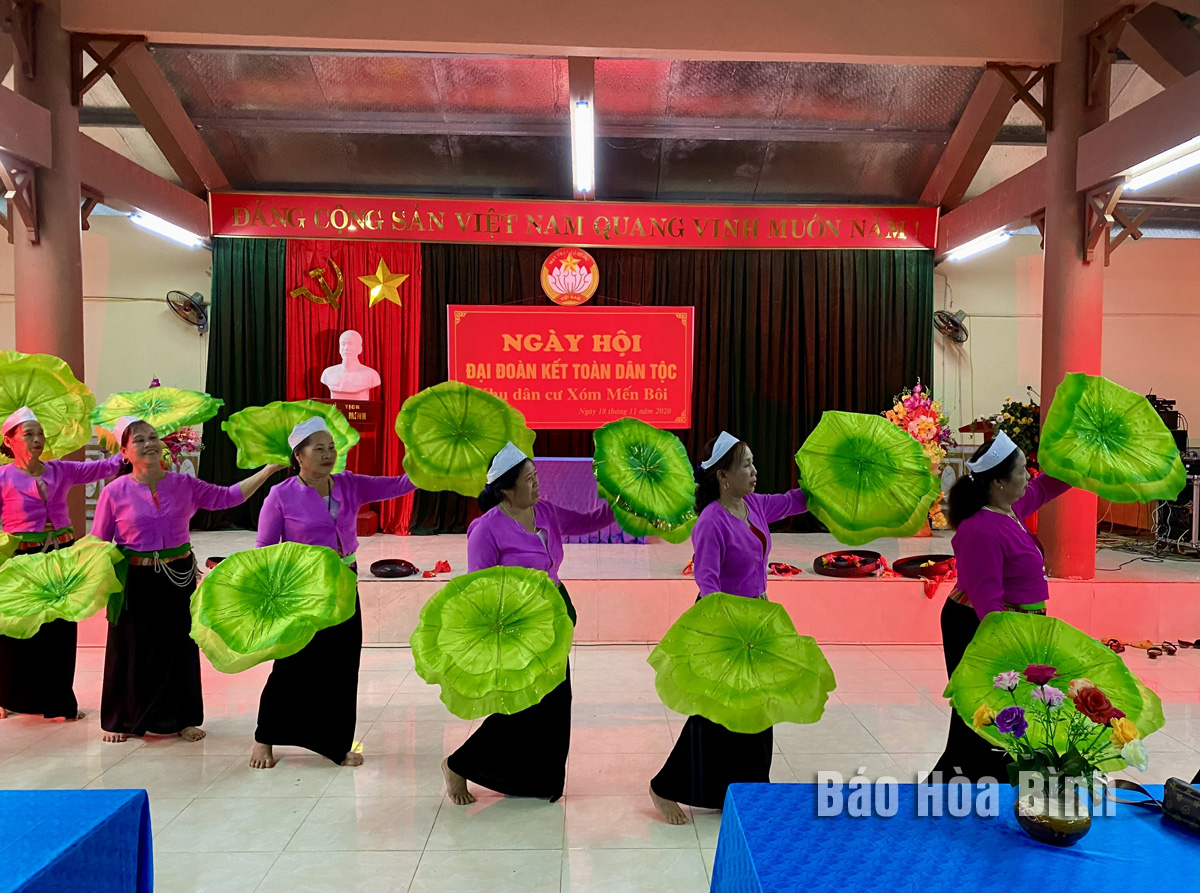
The "All people unite to build cultural life" movement, which has been effectively integrated with Kim Boi district’s socio-economic development goals, is fostering a lively spirit of emulation across local residential areas, hamlets, villages, public agencies, and enterprises. In addition, through the initiative, traditional cultural values are being preserved and promoted, while community solidarity and mutual support in poverty reduction and economic development are being strengthened.
The cultural house of Men Boi hamlet, Kim Lap commune, which is fully equipped to meet the needs of local residents for community activities.
Nguyen Dinh Chinh, head of the Kim Boi Department of Culture, Information, and Science, said the movement has harnessed the collective strength of the political system and gained widespread support from local residents. It is implemented around five core content areas and seven sub-movements.
Currently, 13 out of 17 communes and townships in the district have cultural houses and sports facilities. Efforts to promote civilised lifestyles have been intensified. Management is in place to ensure the organisation of festivals following a respectful, cost-effective, and safe manner that reflects the local ethnic cultural identity. A family code of conduct has also been introduced to households and residential areas, serving as a benchmark for evaluating "cultural families” annually.
From the associated "good people, good deeds” movement, Kim Boi has identified and replicated 14 outstanding models at the district level and three at the provincial level. Notable examples include the families of Vuong Sy Hai in Treo hamlet, Tu Son commune, and Bui Van Lung in Ve hamlet, Dong Bac commune, who donated land for road construction. Another standout is the Bac Son kindergarten in Hung Son commune, which developed a model to enhance Vietnamese language skills among ethnic minority children while preserving their cultural heritage.
According to Chinh, the movement has contributed to building a healthy cultural environment and improving the spiritual life of locals. Outdated customs have been curbed, social ills contained, and cultural institutions enhanced. Neighbourly relations have grown stronger, fostering shared development, economic progress, and maintaining political stability and public order across the district.
Phong Phu commune, Tan Lac district of Hoa Binh province, is widely regarded as the cultural heartland of the Muong ethnic group. Among its many traditional communities, Luy Ai hamlet (formerly Ai hamlet) stands out as a rare location where the customs and way of life of the Muong Bi people remain largely intact.
The Truong Kha temple festival, a distinctive cultural event held every three years in Vu Ban township, Lac Son district, returned recently with vibrant rituals and folk traditions of the Muong people. Located next to the Buoi River in the Muong Trao fields, the Truong Kha Temple is dedicated to the three Kun Dol deities, revered for teaching farming techniques, irrigation, weaving, and protecting the harvest.
The demand for spaces serving community activities of residents in various areas across Hoa Binh city has been satisfied as local cultural houses now feature modern, spacious facilities thanks to the effective implementation of Resolution No. 49/NQ-HDND issued on December 28, 2021 by the city People's Council, which approved the plan for reorganising, converting, and allocating land for the construction, repair, and expansion of cultural houses in Hoa Binh’s villages and residential areas until 2025.
At the end of May, the Hoa Binh Provincial Ethnic Arts Troupe organized a series of performances for residents in Region 2 and Region 3 communes across the province. Bringing art to ethnic communities in remote, isolated, and especially disadvantaged areas has become a meaningful activity. These are not merely artistic performances but also journeys to disseminate cultural values, enrich spiritual life, and contribute to preserving the cultural identity of ethnic minorities.
In recent years, alongside the development of a tourism-oriented economy, the traditional brocade weaving craft of the Mong people in Pa Co Commune, Mai Chau district has been gradually preserved and promoted. It has become a unique indigenous cultural feature, contributing to improving the livelihoods of the ethnic minority community.



